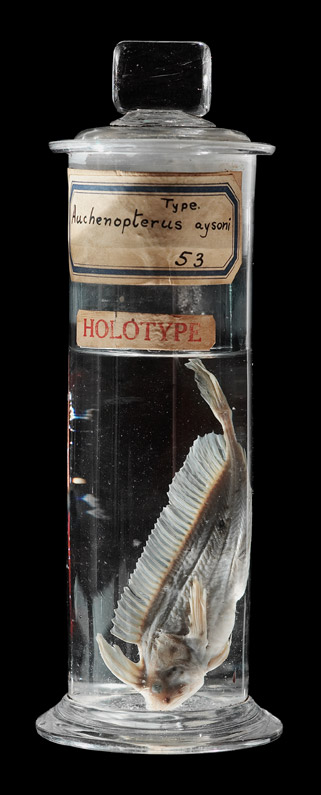 Crested weedfish
Crested weedfish
TLF ID R5522
This is a preserved specimen of a crested weedfish ('Cristiceps aurantiacus', but labelled 'Auchenopterus aysoni' in this specimen). It was collected by a Mr Stephenson in 1901 in the Bay of Islands, in the north of the North Island of New Zealand. It is head down in alcohol in a glass jar on which two labels are pasted. One reads 'Type. Auchenopterus aysoni 53' and the other, 'HOLOTYPE'. The specimen measures 14.3 cm in length. (Current scientific classification for crested weedfish - Phylum: Chordata, Class: Actinopterygii, Order: Perciformes, Family: Clinidae.)
